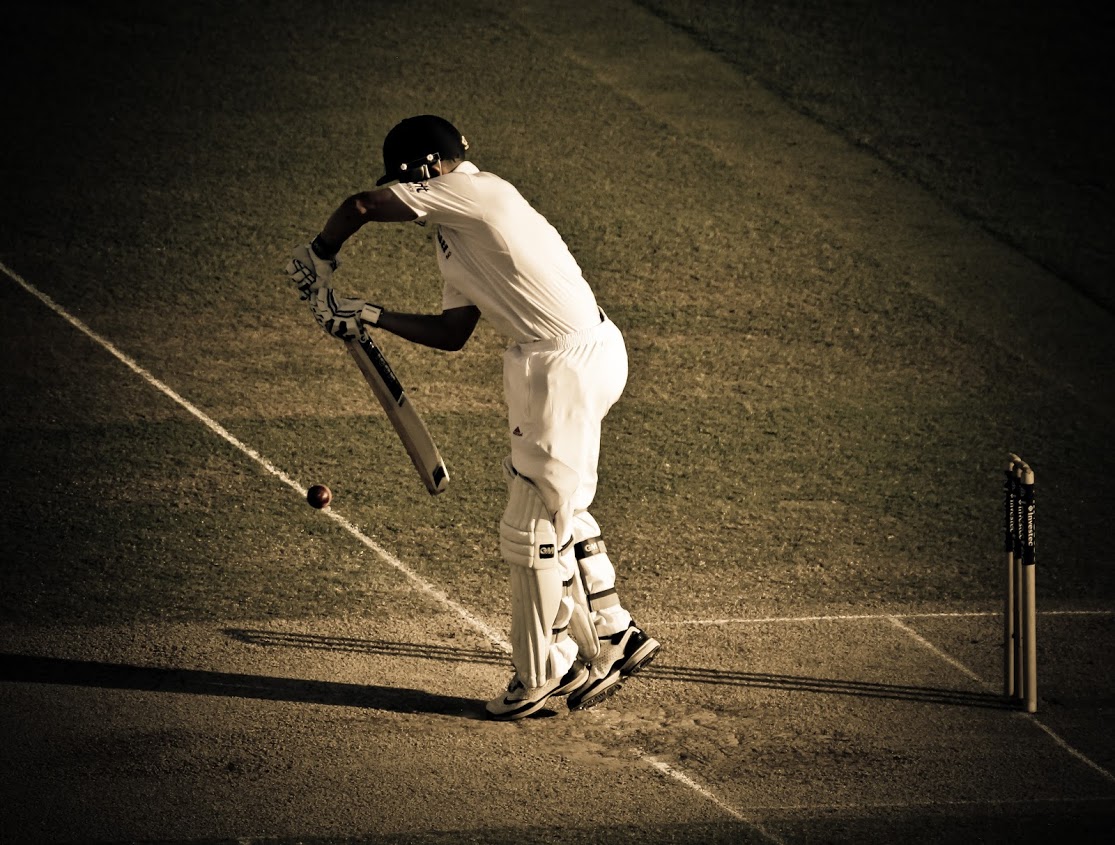I hope you were wearing appropriate eye-protection during the England v Australia Champions Trophy match last Sunday.
The teams’ respective coloured outfits – scarlet and daffodil – would not have looked out of place in a particularly gung-ho teach-yourself-Mondrian art class. The combination was seemingly and sadistically designed to cause a severe migraine, if not long term retinal damage.
England’s jaunty shade of red left each of our players looking, as one e-mailer to TMS put it, like a bottle of tomato ketchup. The Aussie yellow, meanwhile, leant their cricketers an air less of sporting warriors than extras from an early 1980s Black Lace video.
The question must be asked – what exactly is the point of coloured outfits for one day cricket?
The designs do not make the players look exotic and glamorous. Rather, they appear as if dressed by a colour-blind delusional equipped only with a bag of off-cuts from Carpet Warehouse.
The base concept, I suppose, is to dress the players in their tribal colours. But the designs and shades change too often, and are variously diluted by tweaks, panels and piping, not to mention the cardinal sin (common in county cricket) of selecting different colours for the shirt and trousers.
The designs variously give each squad an air of either preposterousness, drab functionality, or membership of an eccentric but disciplined religious cult. The Holland players, in their orange, could easily be mistaken for a team of Easyjet mechanics. The average English county player, in his mis-matching shades of purple and beige, seems appropriately dressed only to sell you a set of garden furniture.
The tribal idea itself is flawed, either because the teams regularly change their colours (England), wear the wrong colour (Australia – who should be in green) or wear the same colours as each other. In the 2002 Natwest ODI series, contested between England, Sri Lanka and England, all three teams wore blue.
What evidence is there that coloured clothes make the game more attractive to audiences? What exactly is wrong with wearing white? Have you ever heard anyone say, “I never used to like cricket before, but now they wear coloured outfits…”.
People watch cricket because the cricket itself is interesting or exciting, not because of gimmicks.
Why do we have coloured strips in the first place? They were introduced to cricket by Kerry Packer in the late 1970s, at a time when he needed some ostentatious innovation to launch his World Series – and differentiate it from the traditionally organised game.
At first, the new look was exciting. The first time I ever saw coloured strips – watching highlights of WSC in the early 1980s – I was thrilled. But the novelty wears off extremely quickly.
Colours are now ubiquitous in limited overs cricket for the same reason that so many other aspects of public life are contorted or infantilised: meetings.
It is my belief that meetings are the greatest curse of modern civilisation, and the fate of cricket attire is a telling example of this.
At several points over the last twenty years, meetings have been held by cricketing bodies at which the question has been asked: “how do we make cricket a bit more modern and accessible?”
The people attending this meeting have all felt under pressure to say something interesting and progressive – and at such a juncture it matters not whether you have a sensible and well thought-through idea, just that you have *an* idea. Far better you say something – however fatuous – than nothing. And in a meeting, you get no points for looking after the aesthetic interests of cricket lovers – you have to look after number one.
And so, time and again, the aforementioned question has been asked, and some bright spark has put up his hand and said, “what about coloured clothing?”. As a consequence, here we are – lumbered with them for eternity.
Like most innovations in public life, coloured cricket strips came about not for our benefit, but as a career move for someone in charge.
What would happen if we went back to playing in whites, in all formats? Can you seriously argue that TV audiences for cricket will decline? That attendances will fall – as a direct result?
If I were king for the day, my first act would be the immediate restoration of whites for all forms of limited overs cricket. If for no other reason, whites just look nicer – they really do – and I defy anyone to effectively argue the opposite.
But, I hear you cry, what about making cricket more accessible to a wider public? You’ll find no greater advocate than me for the importance of democratising cricket – but the colour of the clothes is, in this regard, a total red herring. For a start, what could be more egalitarian than whites – the outfits which every humble club and school cricketer wears, the world over.
If the people in charge of, say, English cricket were serious about democratising the game, they would put coverage back on terrestrial TV, and invest heavily in coaching programmes for children from state schools and urban areas.
But stuff like that goes against their grain. Instead, it’s much easier for administrators to lob in a few coloured kits by way of paying lip service to the notion of modernising the game.
I’m not suggesting the issue goes quite so deeply that the authorities are using strip design as an instrument of oppression. But it is, even if unconsciously, a fig leaf – which obscures more significant problems.
And ultimately, there are the aesthetics to consider. Cricket is a game of blue, green, and white – the sky, the grass, and the players. Reds and purples have no place in our sport – nor should its participants look like complete twits. For all our sakes, and our eyesight – let’s switch back to white, and send the colours back to the garden centres and Kwik Fit depots where they belong.










I agree to an extent… Australia’s bright yellow outfits are not easy on the eyes (and clash with their green helmets). But I don’t really have a problem with coloured outfits in night-time matches, such as night-time T20 matches. I see T20 matches as more of a spectacle for entertainment, than serious cricket, anyway.